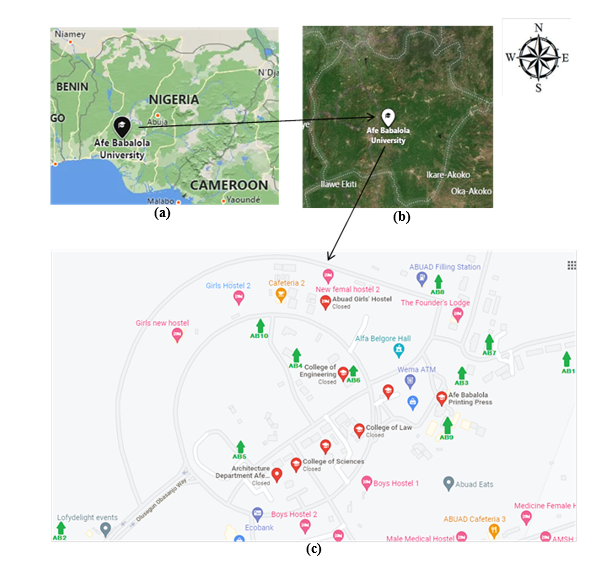Assessment of Heavy Metal Pollution Status in Surface Soil of a Nigerian University
Keywords:
Contamination indices, Ecological risk assessment, Multivariate techniques, Afe-Babalola UniversityAbstract
The problem of urban soil contamination with heavy metals due to rapid urbanization and industrialization has been a major concern in recent years. A university can be considered as a product of industrialization and urbanization which is associated with different activities that may induce heavy metals pollution into the environment. Therefore, this research work assessed the contamination level of chromium (Cr), copper (Cu), lead (Pb), zinc (Zn) and manganese (Mn) in surface soils of Afe-Babalola university (ABUAD) using various indices. Soil samples were taken from ten (10) different functional sites in the university. These samples were taken to the laboratory and analyzed for chromium (Cr), copper (Cu), lead (Pb), zinc (Zn) and manganese (Mn) using standard method. The mean concentrations of copper (Cu), chromium (Cr) and lead (Pb) were up to 0.75, 0.66 and 0.36 mg/g respectively, while manganese (Mn) and zinc (Zn) were 1.37 and 0.49 mg/g respectively. The average concentration of manganese (Mn) was comparable to its corresponding natural background value, but the average concentration of chromium (Cr), copper (Cu), zinc (Zn) and lead (Pb) were higher. They were approximately of the ratio 1:7, 1:2, 1:3 and 1:2 respectively compared to their corresponding natural background value. The multivariate statistical analyses indicated that vehicles, power generating sets, petrol station, machine workshops, production plants and emissions from outdoor roasted food spots were the major sources of heavy metals contamination on the universitys’ soil. The results from contamination indices and assessment showed that the contamination level of soils within the university can generally be classified as moderately contaminated. Therefore, periodic assessment of the sources and associated ecological risks of the heavy metals is highly recommended. This is to enable decision-makers to effectively manage the environment in the manner that will preserve public and ecosystem health.

Published
How to Cite
Issue
Section
Copyright (c) 2022 M. A. Lala, S. Kawu, O. A. Adesina, J. A. Sonibare

This work is licensed under a Creative Commons Attribution 4.0 International License.
How to Cite
Most read articles by the same author(s)
- M. A. Lala, O. A. Adesina, O. J. Odejobi, J. A. Sonibare, Theoretical Air Requirement and Combustion Flue Gases Analysis for Indigenous Biomass Combustion , Journal of the Nigerian Society of Physical Sciences: Volume 4, Issue 4, November 2022







